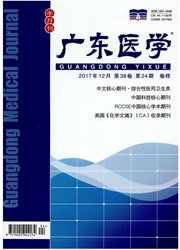

 中文摘要:
中文摘要:
目的探讨全氟化合物(PFAAs)暴露与儿童哮喘及Th1型细胞因子[白细胞介素(IL)-2、γ干扰素(IFN-γ]和Th2型细胞因子(IL-4、IL-5)分泌水平的关系。方法选择231例医院就诊的哮喘儿童作为病例组,来自社区的225例正常儿童作为对照组。采用双抗体ELISA试剂盒检测儿童血清中细胞因子IL-2、IFN-γ、IL-4、IL-5的分泌水平;高效液相色谱仪分析血清中全氟辛烷磺酸(PFOS)和全氟辛酸(PFOA)的水平。结果哮喘儿童机体PFOS(33.9μg/L掷.28.9μg/L)和PFOA(1.2μg/L vs .0.5μg/L)暴露负荷显著高于对照组儿童,且随着机体PFAAs的增高,儿童患哮喘的风险呈增高趋势。对哮喘儿童而言,血清PFAAs水平与Th1型细胞因子(IL-2、IFN-γ)存在显著负相关关系,而与Th2型细胞因子(IL-4、IL-5)呈正相关关系。结论PFOS暴露可诱导机体免疫应答平衡紊乱,向Th2型免疫应答极化。
 英文摘要:
英文摘要:
Objective To assess the associations of serum polyfluoroalkyl substances (PFAAs) concentrations with asthma and key Th2 cytokines in children. Methods A total of 231 asthmatic children and 225 non - asthmatic controls were recruited in the Genetic and Biomarker study for Childhood Asthma. Serum concentrations of two PFAAs and levels of interferon (IFN) - γ, interleukin (IL) - 12, IL - 4 and IL - 5 were measured. Results The significantly high- er serum PFAAs were observed in asthmas children than healthy controls. Adjusted odds ratios suggested that PFAAs ex- posure significantly increased the risk of asthma. PFAAs were positively associated with serum Th2 cytokines and negative- ly associated with Thl cytokines among asthmatics. Conclusion Increased serum PFAAs levels may promote Th cell dys- regulation and alter the availability of key Thl and Th2 cytokines, effects that could ultimately contribute to development of pulmonary allergic diseases.
 同期刊论文项目
同期刊论文项目
 同项目期刊论文
同项目期刊论文
 期刊信息
期刊信息
